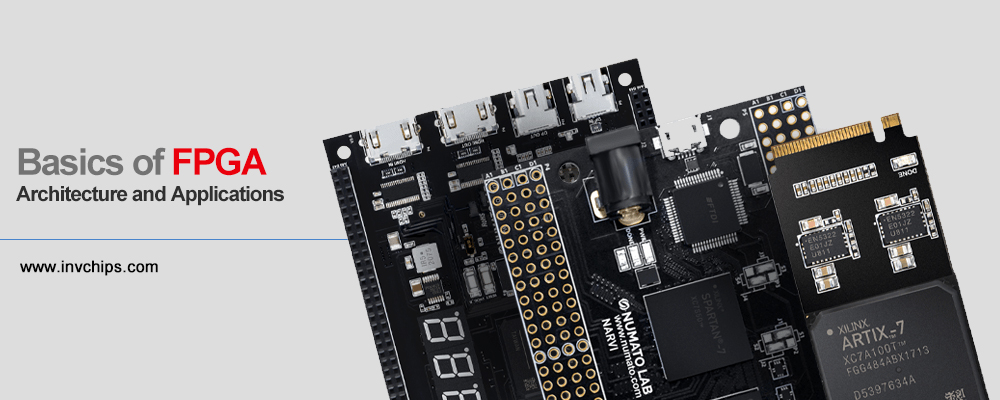Basics of FPGA Architecture and Applications
The term FPGA stands for Field Programmable Gate Array and, it is a one type of semiconductor logic chip which can be programmed to become almost any kind of system or digital circuit, similar to PLDs. PLDS are limited to hundreds of gates, but FPGAs supports thousands of gates. The configuration of the FPGA architecture is generally specified using a language, i.e., HDL (Hardware Description language) which is similar to the one used for an ASIC ( Application Specific Integrated Circuit).
FPGAs can provide a number of advantages over a fixed function ASIC technology such as standard cells. Normally, ASICs takes months to manufacture and the cost of them will be thousands of dollars to obtain the device. But, FPGAs are fabricated in less than a second,the cost will be from a few dollars to a thousand dollars.The flexible nature of the FPGA comes at a significant costin area, power consumption and delay.When compared to a standard cell ASIC, an FPGA requires 20 to 35 times more area, and the speed’s performance will be 3 to 4 times slower than the ASIC. This article describes about theFPGA basics and FPGA architecture module that includes I/O pad, logic blocks and switch matrix. FPGAs are some of the new trending areas of VLSI. Therefore, these are used in VLSI based projects for electronic engineering students.
FPGA Architecture
The general FPGA architecture consists of three types of modules. They are I/O blocks or Pads, Switch Matrix/ Interconnection Wires and Configurable logic blocks (CLB). The basic FPGA architecture has two dimensional arrays of logic blocks with a means for a user to arrange the interconnection between the logic blocks. The functions of an FPGA architecture module are discussed below:
- CLB (Configurable Logic Block) includes digital logic, inputs, outputs. It implements the user logic.
- Interconnects provide direction between the logic blocks to implement the user logic.
- Depending on the logic, switch matrix provides switching between interconnects.
- I/O Pads used for the outside world to communicate with different applications.
Logic Block contains MUX (Multiplexer), D flip flop and LUT. LUT implements the combinational logical functions; the MUX is used for selection logic, and D flip flop stores the output of the LUT.
The basic building block of the FPGA is the Look Up Table based function generator. The number of inputs to the LUT vary from 3,4,6, and even 8 after experiments. Now, we have adaptive LUTs that provides two outputs per single LUT with the implementation of two function generators.